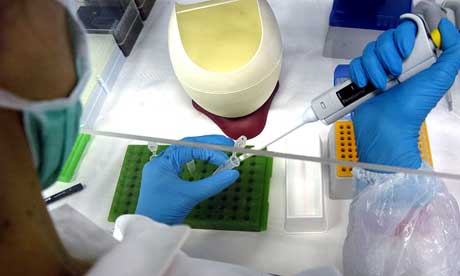Vallée-Bélisle and Michnick have developed a new approach to visualize how proteins assemble, which may also significantly aid our understanding of diseases such as Alzheimer’s and Parkinson’s, which are caused by errors in assembly. Here shown are two different assembly stages (purple and red) of the protein ubiquitin and the fluorescent probe used to visualize these stage (tryptophan: see yellow). (Credit: Peter Allen)
Researchers Watch Tiny Living Machines Self-Assemble -- Science Daily
ScienceDaily (June 10, 2012) — Enabling bioengineers to design new molecular machines for nanotechnology applications is one of the possible outcomes of a study by University of Montreal researchers that was published in Nature Structural and Molecular Biology June 10. The scientists have developed a new approach to visualize how proteins assemble, which may also significantly aid our understanding of diseases such as Alzheimer's and Parkinson's, which are caused by errors in assembly.
Read more ....
My Comment: Faster please.



















